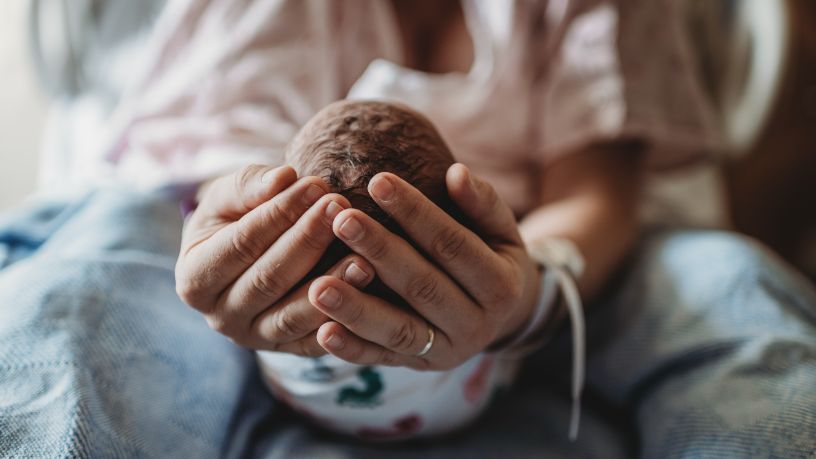Gestational diabetes occurs during pregnancy, and impacts around one in 6 people in Australia. Learn how to manage your diagnosis.
On this page
Key takeaways
With the right action, you can reduce your risk of developing gestational diabetes.
Gestational diabetes increases the risks of developing type 2 diabetes for both the pregnant parent and the child.
If you have gestational diabetes, you’re not alone. In Australia, approximately one in 6 pregnant people are diagnosed with the condition.1
Here, we look at the basics of gestational diabetes, including its potential risk to you and how to reduce it.
What is gestational diabetes?
Gestational diabetes is diagnosed when blood glucose levels (BGLs) become too high during pregnancy, meaning there’s too much glucose (sugar) in the blood.
During pregnancy, your placenta produces hormones that help your baby grow. But some of these hormones can disrupt your body’s natural insulin process. If your body cannot produce enough insulin, your BGLs rise, and gestational diabetes can develop.2
Gestational diabetes can also occur due to pre-existing, undiagnosed high BGLs.
People are usually screened for gestational diabetes between 24 and 28 weeks of pregnancy, via an oral glucose tolerance test (OGTT).3
If you are at higher risk, your doctor might recommend that you test earlier.
While symptoms of gestational diabetes may not be obvious, they can include:
- urinating more than normal
- increased thirst
- fatigue
- thrush (yeast infections).4
The condition typically resolves itself after the baby is born, when insulin production returns to normal. However, some people can continue to experience high BGLs after delivery.
Risk factors of gestational diabetes
Any pregnant person can develop gestational diabetes. But your risk increases if you:
- have previously had gestational diabetes
- have a mother or sibling who’s had gestational diabetes
- are aged over 40
- are overweight or obese
- have a family history of type 2 diabetes
- are from an Aboriginal or Torres Strait Islander, Melanesian, Polynesian, Chinese, South and Southeast Asian, Middle Eastern, Hispanic or South American background
- previously had a baby weighing more than 4.5kg
- previously had elevated BGLs
- have polycystic ovary syndrome
- take certain types of anti-psychotic or steroid medications.5
How to reduce your risk
While you can’t change your age or genetics, you can make lifestyle changes to help reduce your risk of developing gestational diabetes during pregnancy. These might include:
- maintaining a healthy weight
- keeping you BGLs within a normal range through exercise and diet
- monitoring your BGLs
- attending regular prenatal appointments
- managing stress
- avoiding cigarettes, vapes and alcohol.
As the amount of weight you gain during pregnancy might also be a factor, it’s important that you discuss your pregnancy weight targets with your healthcare team.6
Member Health Programs
Discover health cover that's right for you with a range of personalised programs and services designed to support your health and wellbeing.
What to expect from a diagnosis
A gestational diabetes diagnosis can be scary. However, most people with the condition have a healthy pregnancy and go on to have a normal, healthy delivery.
Your doctors and dietitian can help you manage your condition and provide you with the right advice on treatment, healthy eating and physical activity.
As with all diabetes, if you have gestational diabetes you will need to regularly monitor your BGLs during your pregnancy to ensure they’re kept in a healthy range. If your BGLs can’t be managed with diet and exercise alone, you may need medication.
You will be closely monitored during your pregnancy, particularly towards the due date. Those with gestational diabetes are more likely to need a caesarean section or induced labour.7
Healthy habits post-pregnancy
Unfortunately, having gestational diabetes puts you and your baby at an increased risk of developing type 2 diabetes later in life.5
Your doctor may recommend checking your BGLs during your 6-week postnatal check-up. It may also be important to continue to monitor for symptoms, such as thirst, frequent urination or fatigue.
There are close to 1.5 million Australians living with some type of diabetes.8 To reduce your risk of developing pre-diabetes and type 2 diabetes, it’s important to maintain a healthy weight, regularly exercise, eat a healthy diet, avoid smoking and manage your blood pressure and cholesterol throughout your life.
Resources
Diabetes Australia offers counselling services with a diabetes-experienced psychologist on 1800 177 055.
The National Diabetes Service Scheme (NDSS) offers online resources, advice and a dedicated helpline on 1800 637 700.

At Bupa, trust is everything
Our health and wellbeing information is regularly reviewed and maintained by a team of healthcare experts, to ensure its relevancy and accuracy. Everyone's health journey is unique and health outcomes vary from person to person.
This content is not a replacement for personalised and specific medical, healthcare, or other professional advice. If you have concerns about your health, see your doctor or other health professional.
1Australian Government, Australian Institute of Health and Welfare. (2024). Diabetes: Australian facts. Australian Government.
2National Diabetes Services Scheme. (2024). Understanding gestational diabetes. National Diabetes Services Scheme.
3Healthdirect. (2023). Gestational diabetes. Healthdirect.
4Better Health Channel. (2021). Diabetes - gestational. Victoria State Government, Department of Health.
5Diabetes Australia. (2019). Gestational diabetes. Diabetes Australia.
6Gou, B. H., Guan, H. M., Bi, Y. X., & Ding, B. J. (2019). Gestational diabetes: weight gain during pregnancy and its relationship to pregnancy outcomes. Chinese Medical Journal, 132(2), 154-160.
7Australian Government, Australian Institute of Health and Welfare. (2019). Incidence of gestational diabetes in Australia. Australian Government.
8Diabetes Australia. (2019). About diabetes. Diabetes Australia.
You might also like...
Diabetes 101: What are the different types?
Understanding the different types of diabetes is an important step in learning how to manage your health and preventing serious issues in the future.
7 ways to look after yourself during pregnancy
Being pregnant means you’re going through a lot of changes, both physical and emotional. We’ve put together some tips to help you look after yourself and your growing bub.
8 diabetes myths debunked
Diabetes can be complex, so naturally there are a lot of myths floating around about how you get it, treat it and ‘cure’ it. But what’s the truth?
Birth care options: What’s right for you?
Pregnancy planning can be daunting, so it pays to properly understand your choices. Learn about 4 common birth care options.





